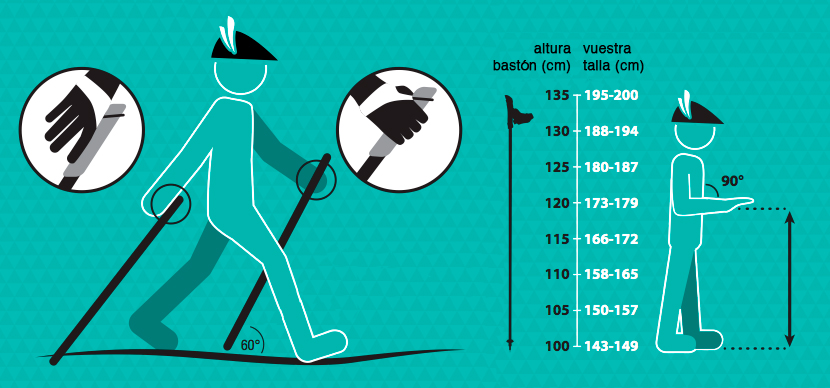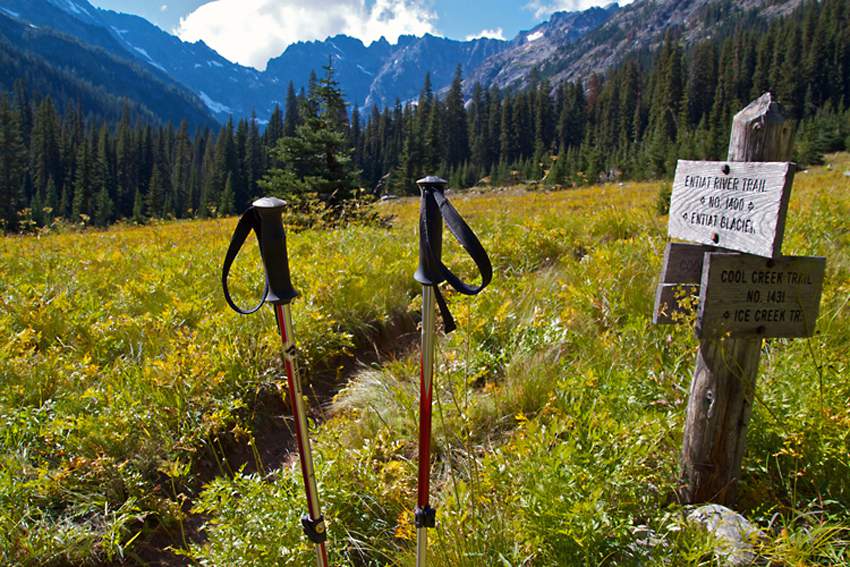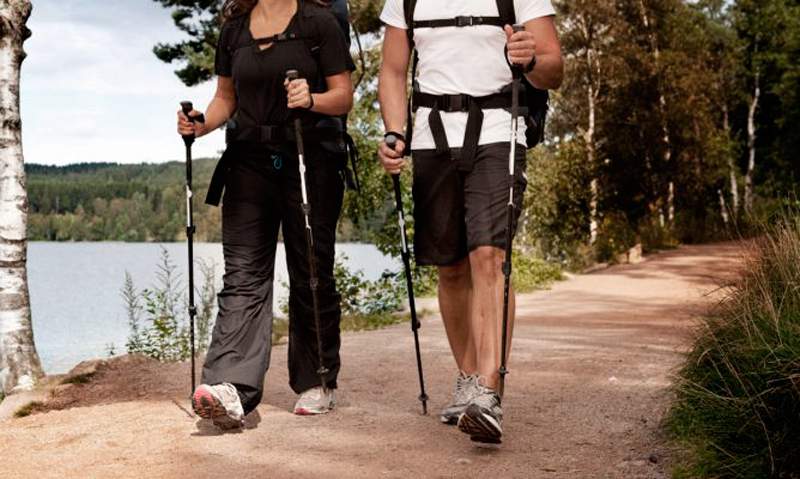Hiking poles: how to use them correctly?
9 years ago · Updated 6 months ago

Once you've tried hiking poles in the mountains, you'll never go out without them again! We explain how to use them correctly.
Using hiking poles reduces the impact on your joints, especially your knees, by up to a quarter. Don't forget that in the mountains, you're used to carrying a load (rucksack, drink, basket to look for mushrooms,. . . ).
Walking sticks also help to improve stability and balance, reducing the risk of slipping. Although they can be tricky to handle, especially at first, once you get used to using them, you won't go out in the mountains without them.

Using a hiking pole, whether they're handcrafted poles or the more modern ultra-light aluminum ones, also involves choosing the model that suits us best. Mainly the height of the stick and how it's adjusted and fixed. That's why at La Casa de las setas, we want to help you with this task
How to adjust hiking poles?
Many mushroom pickers use traditional sticks and hooks like this wooden stick for foraging for mushrooms, but this type of stick has the disadvantage of not being able to be folded up, nor does it adjust in height.
In addition, they are a little heavier than the new aluminum poles and are less comfortable for long hikes. Their durability and strength work in their favor.
The artisanal nature of a handmade stick by a craftsman is also a point in its favor. What's more, because they're made of wood, they allow for customization, which is why many enthusiasts opt for this option.
Hiking poles, foldable and adjustable
On the other hand, there are the new mountain poles, foldable and height-adjustable, altering the position of the sections that make them up. This fastening system can be of various types: screw, clip, snap ... .
It's important that the fastener is sufficiently locked to ensure that the pole remains fixed. All these fasteners must be manipulated manually, without the use of external tools that could damage the baton sections.
It's recommended not to go beyond the stop line of each stick model, as it could break while you're using them.

Posture for using walking poles
When it comes to good posture, the position of the forearm that will be using the hiking pole in relation to the body, must be perpendicular. This position we'll need to modify slightly depending on the terrain we're walking on (flat, slope,. . . ).
We recommend that you keep your body straight and perpendicular to the ground when you walk. You'll better balance the effort between legs and arms, and keep your ribcage open. You'll keep a better rhythm and breathe better as you walk.
Techniques for using hiking poles
As we've mentioned, the position of each pole will vary according to the terrain. We'll show you different possibilities and how to use them in each:
Flat ground

If what we want is to pick up the pace, we'll use the sticks alternatively and by moving them at the same time as their opposite leg. That is, the right stick will move in conjunction with the left leg.
If we don't need to speed up the journey, we can also fold the sticks and store them in the backpack, to relieve the arms of their use. We'll use them again when the terrain calls for it.
Descents
If the descent is very steep, we can use the 2 poles at once and place them right in front of you, without impeding the movement of the feet. This will slow down the speed of descent and gain balance. If the descent is not very pronounced, we can use the poles as on flat ground.
In both cases, increasing the length of the poles between 5 and 8 cm will help make the descent more comfortable.
Ascents
In these cases, it's the opposite of descents, and it's recommended to lengthen hiking poles by 5 to 8 cm, again depending on the descent gradient. While you're climbing, you can use the poles for support and propulsion.

What are wrist straps on trekking poles for?
As well as giving you a better grip on the pole, they provide better propulsion if you lean on them while walking, especially when climbing. By taking the strain off the hand, they also reduce fatigue.
If you're going downhill, it's advisable to remove the hiking pole's wrist strap, to avoid snagging on the poles in the event of a possible fall. By not wearing them attached, you'll be able to part with them and use your hands to cushion the shock
How many poles are recommended, 1 or 2?
When we're looking for mushrooms, it's recommended to use just one hiking stick. You can change hands regularly. Plus, we'll need the other hand to carry our basket. In addition, we can use the stick to push aside branches that get in our way.
If we're going for a short walk and on simple, flat terrain, a single stick will suffice. But if we're going hiking, using 2 mountain poles is highly recommended to improve stability, balance and reduce the impact on joints and muscles.
What about you? Do you already use poles for mountain walking? Do you prefer wooden or aluminum poles? Tell us about it on our Facebook page.
Here's to sticks and mushrooms!

Te pueden interesar